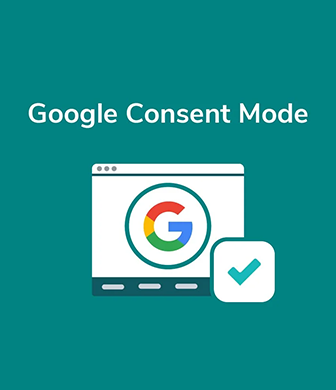

Digital Marketing Guide for Fashion Brands
The Rise of the Fashion Industry in the Digital World
Today, the fashion and apparel industry is undergoing a major transformation by quickly embracing the opportunities brought by digitalization. Especially boutique fashion brands are now able to reach not only local but also global audiences by maintaining an active presence on digital platforms. This allows small and medium-sized brands to compete with much larger players in the market.
Social media, e-commerce sites, and digital marketing tools have become essential for increasing brand awareness, building loyal customer bases, and significantly boosting sales for boutiques. Platforms like Instagram, TikTok, and Facebook enable brands to tell their stories to wide audiences through impactful visual campaigns, influencer partnerships, and targeted advertising. Additionally, the development of e-commerce infrastructure offers consumers a fast and convenient shopping experience through user-friendly websites, mobile apps, and online payment systems.
However, simply existing in the digital world is not enough for success. Brands must implement the right digital strategies to achieve sustainable growth. These include effective social media management, SEO (Search Engine Optimization), email marketing, personalized customer experiences, and data-driven campaign management. Staying up to date with digital trends, producing creative content, and quickly responding to customer feedback are also critical factors for success.
As digitalization continues at full speed, maintaining an active online presence is no longer optional but a necessity for boutique fashion brands. By applying the right strategies and innovative approaches, these brands can build loyal customer communities and secure a permanent place in the market.
1. Know Your Target Audience
The success of your digital marketing strategies directly depends on how well you know your target audience. Understanding which customer segment your brand serves is the first step to creating effective campaigns and the right communication tone.
Start by identifying the features, benefits, and needs your product or service addresses. Then analyze demographic and psychographic data such as age, gender, education level, income, location, interests, purchasing behavior, and digital platform usage habits.
This analysis allows you to create targeted campaigns, personalized product recommendations, and engaging content. For example, a brand targeting a young, trend-driven audience should focus on dynamic and creative content on social media, while a brand offering classic and elegant designs should adopt a more refined and sophisticated digital tone.
By understanding your target audience, you can reach them at the right time with the right message at every stage of the customer journey, significantly increasing engagement rates. Additionally, you can build long-term customer relationships by improving satisfaction and loyalty. Regular surveys, feedback forms, and social media analysis will help you continuously refine your marketing strategies.
2. Build an SEO-Friendly Website
Creating a professional and user-friendly website for your fashion brand is one of the cornerstones of your digital presence. An SEO-optimized website ensures higher rankings on search engines.
Conduct keyword research to identify popular search terms used by your customers and incorporate these keywords naturally into your website content. Mobile responsiveness and fast loading speeds are also critical SEO factors.
Website Structure: Important pages should be easily accessible from the homepage within 2–3 clicks.
Keyword Optimization: Focus on high-volume keywords and categories to increase your chances of success.
Internal Linking: Use internal links to help Google crawl your site more frequently and improve navigation for your visitors.
3. Increase Brand Awareness with Social Media Strategies
As users spend more time on social media, brands gain more visibility. This naturally increases brand recognition. Social media also enables users to follow, like, and comment on brands, boosting interaction and strengthening brand loyalty.
Be consistent with your social media presence, leverage influencer collaborations, and run targeted ads to expand your reach.
4. Build Customer Loyalty with Content Marketing
The phrase "Content is King," coined by Bill Gates in 1996, accurately predicted the rise of content marketing with the growth of the internet. Content marketing helps businesses attract their target audience and engage with them by publishing written and visual materials online.
By integrating blogs, social media posts, videos, and podcasts into your content strategy, you can not only drive conversions and increase revenue on your e-commerce site but also enhance brand awareness and loyalty.
The key is to ensure your content reaches your target audience organically. Content should offer value and solve your customers’ problems without disrupting their daily lives, increasing the chances they will revisit your site or social media platforms.
Content marketing is a powerful subfield of digital marketing, and running both strategies together will deliver the best results.
5. Use Email Marketing to Stay Connected
Email marketing is an effective way to maintain communication with your existing customers. Send regular updates about new products, promotions, and special offers to keep customers engaged.
With email marketing, you can interact with your audience instantly and address their needs promptly. Personalized emails also improve customer satisfaction and loyalty, making it easier to retain your client base.
6. Reach Local Customers with Local SEO
Local SEO services are an excellent way to reach potential customers in your specific area. Optimize your Google My Business profile, conduct local keyword research, and create localized content to improve your presence in local search results.
Local SEO is especially important for physical stores or regional service providers. By targeting your local audience effectively, you can increase foot traffic and build a stronger community presence.
7. Track Your Performance with Analytics
Use analytics tools to measure the effectiveness of your digital marketing efforts. Platforms like Google Analytics and social media insights help you understand what is working and what needs improvement.
This data-driven approach allows you to allocate your marketing budget more efficiently and continuously optimize your strategy for better results.
Achieve Success in Fashion with Digital Marketing
For fashion brands, digital marketing can lead to tremendous success when executed with the right strategies. Understanding your target audience, creating an SEO-friendly website, leveraging social media and content marketing, utilizing email marketing, and continuously improving through analytics will help you stand out and grow your brand in the digital world.












